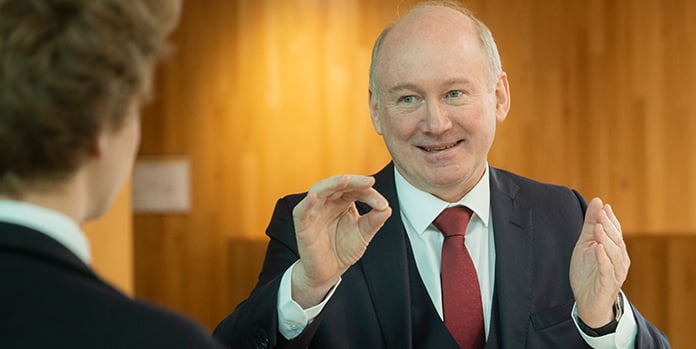At Melbourne Grammar, we know that learning requires rich, human interactions. All members of the community need to be active participants so that we learn from, with and through each other.
Social Constructivism is a theory of education which emphasises that learning happens best in a social context through communication. That is, in general, learning is most effective when it occurs under the guidance of, or in collaboration with, others. Language and culture play important roles in these interactions. The theory was proposed by Lev Vygotsky (1896-1934) in the 1930s and remains relevant today.
We are all familiar with the training model of an apprentice learning from a master craftsperson. In this instance the learning happens in a social context, guided by the person with the most knowledge and adapting the ‘teaching’ to the needs of the learner.
At Melbourne Grammar, the joy of learning comes through the human interactions we share. The social context is critical as we learn from and with each other.
A shared dialogue in the classroom
We utilise the Socratic method to foster this engagement in many classrooms. In this method, the classroom experience is a shared dialogue between teacher and students in which both are responsible for pushing the dialogue forward through questioning. The “teacher” or leader of the dialogue asks probing questions to expose the values and beliefs that frame and support the thoughts and statements of the participants in the inquiry. The students ask questions as well, of both the teacher and each other.
Implications of the theory
Vygotsky believed everything is learned on two levels. First through interaction with others and then integrated into the individual’s mental structure. This model has these key consequences for our teaching and learning programs:
- We need a time of reflection to process and unpack the learning we experience. Homework is an important tool for this.
- We need interaction with others to offer insights, challenges, and ideas. Learning is cocreated, and all parties can gain from the experience.
- Motivation will be partly extrinsic (through social interaction) and partly intrinsic.
- Teachers need to reflect upon the structure of the class and the tasks set – what can better be done in private and what needs a social context to be most effective?
- Students can amplify their creative and learning opportunities by sharing and defending their ideas within a group.
The digital world has much to offer education. However, it can struggle to facilitate the social interaction flagged by Vygotsky that is central to the development of deep learning. At Melbourne Grammar, we keep abreast of emerging online and digital opportunities, using them appropriately to advance our approach to teaching and learning.
Further reading
The Heads of Teaching and Learning in each campus have recently written articles which discuss the importance of the social context of learning in different contexts
- Seonaid Chio, Head of Teaching and Learning at Grimwade House, discusses how staff collaborate, sharing and learning from each other here
- Chris Drummond, Head of Teaching and Learning at Wadhurst, discusses the use of student reflection as a feedback dialogue between teacher and student here
- Bryan Wood, Head of Curriculum in the Senior School, describes a new program linking recent alumni with current students here
Andrew Baylis
Director of Learning and Research



